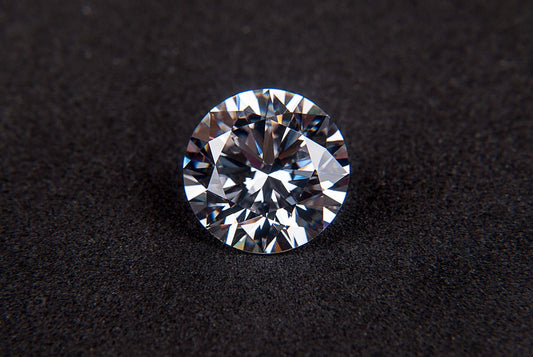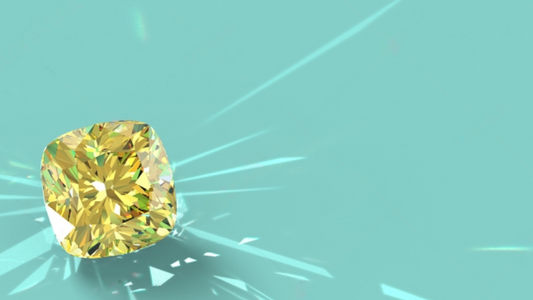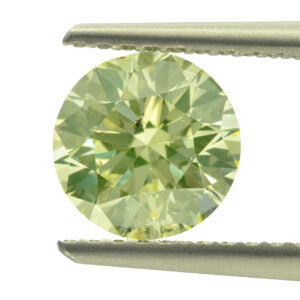The phrase “Rome wasn't built in a day” may sound familiar to you, and a perfect diamond cut is no different. Currently, the round brilliant diamond shape is the most popular shape for an engagement ring. Over six centuries passed before the diamond was created by multiple craftsmen of different generations. As a result, the diamond cutting process underwent dramatic changes throughout history. How does a brilliant cut diamond differ from other cuts, and why is it considered the ideal cut?
A diamond's quality and value were not universally determined before 1939 when the GIA (Gemological Institute of America) introduced the four C's: colour, clarity, cut, and carat weight. Although nature may dictate the diamond's colour, clarity and carat weight, a master craftsman determines its cut. Since the cut of a diamond is the only characteristic that is not determined when it is formed, it is the only feature that is not determined by its formation.

Diamond Cutting
A range of different diamond appearances has been achieved through diamond cutting over centuries. It was not uncommon to cut diamonds by hand before the invention of machines following the industrial revolution. By using these vintage cutting techniques, diamonds were shaped, faceted and sized in a way that reflected the design trends of their respective eras.
Introducing the brilliant cut diamond came about as diamond cutting machinery developed, enabling more precise cutting of diamonds. This is a new diamond cut that is known for its brilliance and fire. It is also often referred to as sparkle. With this new cut, diamonds shine brightly and have become the new cutting standard for both traditional and unique diamond shapes.
In terms of how a diamond performs in the light when worn, its cut is directly related to its shape. Diamonds with different shapes may be better suited to step-cut facet structures in some cases. The facets of a step-cut diamond are cut into squares or rectangles that emerge from its centre-like steps. Light returns differently from a brilliant cut diamond due to the step cut facets. The "Hall of Mirrors" effect of a step-cut diamond will appear if you look closely at it. While modern round brilliants will sparkle and sparkle, step-cut diamonds will display flashes of light. In diamonds that have emerald or Asscher cuts, this effect is frequently encountered.
Other diamond cuts include cushion cut diamond, European cut, emerald cut, single cut diamond, princess cut, and more.
An article dedicated to the brilliant cut diamond, one of the most beloved diamond cuts, will be featured in this article.
What is a Brilliant Cut Diamond?
Diamonds or gemstones with brilliant cuts, or sparkle, exhibit brilliance or sparkle as a result of having many facets. Due to the cone-shaped shape of the stone, light returns throughout the entire stone, resulting in such brilliance. Diamonds are like windows - a well-cut window lets as much light through as possible. In addition, a diamond that is well cut should reflect light off its facets, resulting in the ring's iconic sparkle.
When you think of a classic, iconic engagement ring, it's typically a round cut diamond solitaire ring that comes straight to mind. Representing almost 75% of diamonds sold in the market, round brilliant diamonds are the most popular diamond cut in the world. They are also a great alternative to traditional cuts such as princess and emerald.
A brilliant cut diamond is also known as the ideal cut diamond, especially when the cut grade is an excellent cut.

Origin of the Brilliant Cut Diamond
Gemologist and mathematician Marcel Tolkowsky was born in Belgium in 1919 and developed the best grading, cutting and polishing methods for diamonds in 1919. In order for a diamond to reach its full potential, he spent years figuring out how to achieve perfect symmetry and proportion. As Marcel points out, a diamond is nothing more than a system of windows and mirrors. In order to capture as much light as possible, the stone's table was mathematically designed.
According to Marcel's scientific calculations, a diamond's fire, brilliance and scintillation will be maximised when cut and polished according to his scientific calculations. 57 facets are deemed necessary for a diamond to be considered a brilliant cut (58 facets for a culet cut diamond). The crown of a diamond must have one table facet, eight bezel facets, eight-star facets, as well as sixteen upper girdle facets. While the pavilion must have 8 facets, there must also be 16 facets on the lower girdle and one culet.
In addition to that, the pavilion, crown, and table must be in specific proportions to one another. A diamond with a small table will not reflect as much light as one with a larger table. Having a large table will result in too much light escaping the diamond. Ideally, the pavilion should not be too deep or too shallow. If it is too deep or too shallow, the light will escape through the bottom, resulting in a reduced amount of brilliance.
This ring was designed particularly to be warm, empathic and reliable in addition to its cut. Furthermore, the shape symbolises commitment and love - perfectly capturing your relationship. It is also for this reason that brides consider the round brilliant cut as ideal for engagement rings.
Advantages of Brilliant Cut Diamonds
Shine
A brilliant-cut diamond shines brighter than any other diamond type when it comes to sparkle. For those who love bling, brilliant cuts are a perfect choice, whether they are round, oval, cushion or princess cuts.
Symbolism
Traditional brilliant cut diamonds instantly come to mind when it comes to proposals. Symbolising union between two lovers, bright flashes of light are universally recognised.
Disadvantages of brilliant cut diamonds
Price point
There is no doubt that brilliant cut diamonds are on the higher end. While different shapes offer different value for money, brilliant cuts produce the most waste due to the cutting process. It's for this reason that shapes such as princess, cushion, oval and pear cuts are more expensive. A round diamond produces the most waste of all brilliant cuts, so it costs more than any other shape.
Conclusion
There is a great deal of meticulous, intricate, and time-consuming work involved in cutting diamonds. This requires highly trained professionals who use their expertise to measure, calculate the angle of the blade and create the angle they need to cut a perfect diamond. The expertise and precision these diamond jewellers possess results in good quality diamonds. Brilliant Cut Diamonds require all these skills to achieve its classy, expensive look.
FAQs
Is a brilliant cut diamond good?
It is possible for a round brilliant cut diamond to be graded Excellent to Poor depending on its cutting quality. The symmetry, polish, brilliance, and fire of a diamond are all factors that determine its cut grade. You should only consider Round Brilliant cut diamonds which have an excellent cut, if you want maximum brilliance and beauty.
Are brilliant cut diamonds more expensive?
Due to the high amount of rough stone that is wasted during the cutting process, the round brilliant diamond is the most expensive cut.









